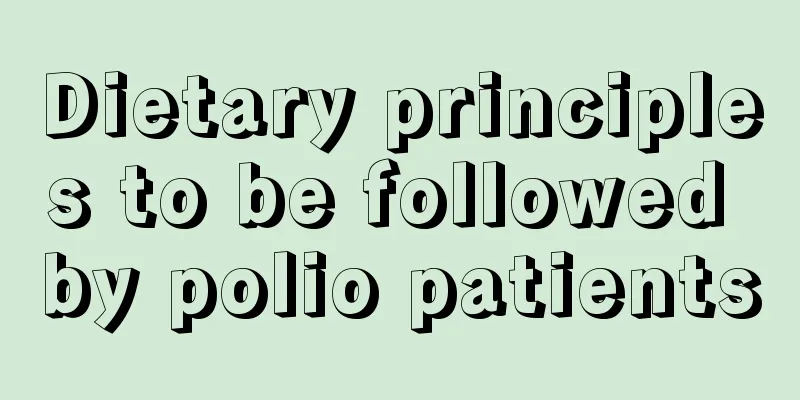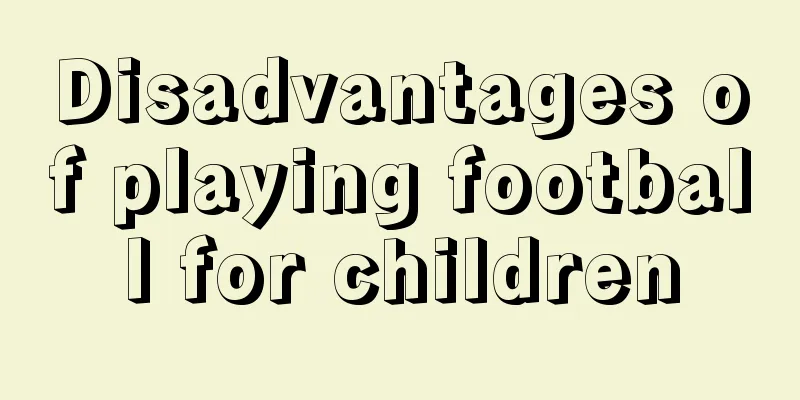Dietary principles to be followed by polio patients

|
There are several diseases that children are prone to that people are more familiar with, such as childhood jaundice, childhood constipation, and polio. The most serious of these diseases is polio, so what you will see below today is some knowledge about polio. What are the dietary principles that polio patients should follow? Let me introduce it to you below. 1. For children with dysphagia, be patient when feeding them and give them food that is easy to swallow. If necessary, the caregiver can use fingers to clean the esophagus downwards to help swallowing; each spoonful should not contain too much food to avoid vomiting; when feeding with a spoon, food should be given from the front midline position. If the child suddenly sticks out the tongue, you can use the spoon to press the tongue, train the child to close the lips, and take the food on the spoon; when drinking water with a spoon, place the edge of the cup on the child's lower lip, not between the teeth, to prevent the child from biting the cup; if the spoon is bitten, do not pull it out forcefully, and wait for the child to relax on his own; for children with polio who drool, avoid wiping the mouth hard to avoid reducing the sensitivity of the lips, and pat the throat with a towel to enhance the awareness of swallowing saliva. 2. Choose nutritious and easy-to-digest foods: eat more lean meat, liver, eggs, fresh vegetables and fruits. Vegetables and fruits contain vitamins and fiber, which can keep the bowels open. If the child does not cooperate well, you can chop the vegetables into pieces and make them into buns, dumplings, vegetable puree and the like to help the patient develop the habit of eating vegetables. 3. Regular and quantitative feeding: Polio patients should be fed properly, generally eating once in the morning, noon and evening. If conditions permit, snacks can be added once in the morning and afternoon. Eating on time can increase appetite. Caregivers need to provide correct feeding methods to prevent malnutrition and indigestion. And gradually cultivate the children's ability to eat independently, which plays an important role in the language development of children with sequelae of polio. Everyone knows that polio patients suffer a lot, and parents also suffer a lot. They can only do their best to help their children treat polio. However, it is worth mentioning that polio patients should also follow certain principles in their diet, the specific content has been introduced above. During the treatment, parents must also pay more attention to the diet. |
<<: Treatment of pancreatitis in children
>>: The role of acupuncture in the treatment of cerebral palsy in children
Recommend
The child fell on the back of his head
Sometimes, although parents take good care of the...
What should I do if my child has a fever of 39 degrees and is having convulsions?
Generally speaking, when a child has a low fever,...
What should I do if my child has cervical vertebrae problems during the summer vacation?
The annual summer vacation has arrived and the ch...
What are the symptoms of a baby's first tooth?
Babies usually start to grow their first tooth wh...
When is the best time for a child’s brain to develop?
Newborn babies sleep a lot every day and are very...
How many times a day is normal for a newborn baby to poop?
We know that although defecation is a common thin...
Why do children's noses bleed easily?
Many parents find that their children's noses...
Why does my child always feel dizzy?
As soon as the child feels a little uncomfortable...
Can the red birthmark on the back of a newborn's head be removed?
Birthmarks are very common and most people will h...
Can babies with constipation drink sesame oil?
If your baby has not had a bowel movement for mor...
What should I do if my two-month-old baby hasn’t defecated for two days?
Everyone knows that when the baby is still in the...
Can children eat tiger tail wheel?
The tiger wheel is a plant that is now also used ...
What can I do to make my child’s dark face white?
In the Chinese aesthetic concept, fair skin is mo...
Myelin development retardation in children
Delayed myelin development in children is general...
What are the methods for correcting hunchback in children?
When families see their children have hunchbacks,...









